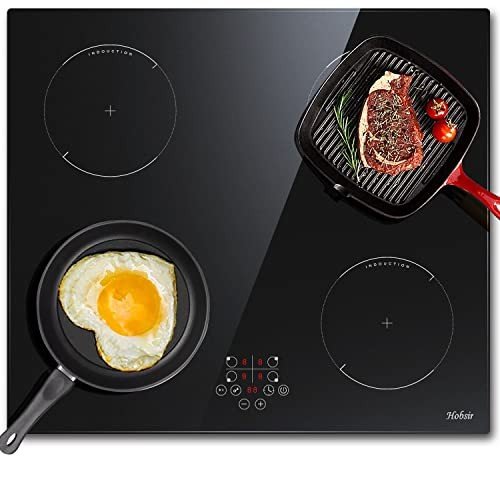Understanding Hobs and Ovens: The Essential Kitchen Appliances
In the realm of kitchen appliances, few products are as necessary as hobs and ovens. Sale Ovens Uk form the backbone of cooking activities, enabling individuals to create everything from simple meals to elaborate banquets. Comprehending the distinctions, types, and performances of hobs and ovens can significantly improve one's cooking experience. Buy Ovens Uk into the complexities of hobs and ovens, offering insights that accommodate both newbie and experienced cooks.
What Is a Hob?
A hob, often described as a cooktop or range top, is the flat surface area on which pots and pans are placed for cooking. Hobs are geared up with heating elements that produce the required heat for cooking food. They are available in different types, including gas, electric, induction, and ceramic alternatives. Each type uses unique benefits and drawbacks.
Types of Hobs
Gas Hobs:
- Heat Source: Natural gas or propane.
- Advantages: Instant heat control and responsiveness, chosen by many chefs for accurate cooking.
- Downsides: Requires a gas connection and can be less energy-efficient.
Electric Hobs:
- Heat Source: Electric coils or smooth glass-ceramic surface areas.
- Advantages: Generally easier to clean, even heating, and widely readily available.
- Drawbacks: Slower to warm up and cool off compared to gas.
Induction Hobs:
- Heat Source: Electromagnetic currents.
- Benefits: Quick heating, energy-efficient, and just warms the cookware, not the surrounding surface area.
- Drawbacks: Requires compatible cookware (ferrous materials).
Ceramic Hobs:
- Heat Source: Electric and has a smooth glass surface.
- Advantages: Sleek look, easy to clean, and even heating.
- Downsides: Can take longer to warm up and cool down.
What Is an Oven?
An oven is an enclosed home appliance that cooks food by surrounding it with dry heat. Ovens can be standalone units or combined with hobs in a single home appliance called a variety. Ovens are flexible tools that can be utilized for baking, roasting, broiling, and more.
Types of Ovens
Conventional Ovens:
- Heat Source: Electric or gas.
- Benefits: Good for traditional baking and roasting.
- Downsides: Can have irregular heat circulation.
Convection Ovens:
- Heat Source: Electric or gas with a fan for flowing air.
- Benefits: More even cooking and much faster cooking times due to airflow.
- Downsides: Can be pricier and may require changes in cooking times.
Microwave Ovens:
- Heat Source: Microwaves.
- Advantages: Quick cooking and reheating; terrific for thawing.
- Disadvantages: Can not brown or crisp food well.
Steam Ovens:
- Heat Source: Steam generation.
- Benefits: Retains nutrients and moisture in food, much healthier cooking alternative.
- Disadvantages: Longer cooking times and typically greater cost.
Key Differences Between Hobs and Ovens
While hobs and ovens serve the main purpose of cooking food, their performances and utilizes differ significantly. The following table sums up these crucial distinctions:
| Feature | Hob | Oven |
|---|---|---|
| Cooking Method | Direct heat | Confined heat |
| Primary Use | Boiling, sautéing, frying | Baking, roasting |
| Heat Source | Gas, electric, induction | Gas, electric, steam |
| Cooking Area | Flat surface area | Enclosed area |
| Cooking Time | Usually much faster | Varies based upon dish |
| Control & & Precision | Immediate and direct | Count on settings and timers |
Advantages of Using Hobs and Ovens Together
Combining using a hob and an oven can greatly improve the cooking process. Here are some advantages:
- Versatility: Different types of food can be cooked at the same time.
- Efficiency: Using both allows for different cooking strategies, such as scorching on the hob and baking in the oven.
- Time-Saving: Multi-tasking can significantly lower overall cooking time.
Upkeep and Care
To ensure the durability of hobs and ovens, regular maintenance is important. Here are some ideas:
For Hobs:
- Clean spills immediately to prevent staining.
- Usage suitable cleaners for specific materials (e.g., ceramic cleaner for glass-ceramic hobs).
- Frequently examine gas connections for leakages (for gas hobs).
For Ovens:
- Wipe down the interior after each use to prevent build-up.
- Use self-cleaning functions if available, or apply oven cleaners for difficult spots.
- Regularly examine seals and gaskets for wear and tear (to keep heat effectiveness).
FAQs About Hobs and Ovens
1. What is the very best type of hob for a beginner cook?
Answer: A ceramic or electric hob is often recommended for beginners due to reduce of usage and cleansing.
2. Can I utilize any pots and pans on an induction hob?
Answer: No, induction hobs require pots and pans made from magnetic products (e.g., cast iron or stainless-steel).
3. How typically should I clean my oven?
Response: It is a good idea to clean your oven every few months, or more often if you utilize it typically.
4. Is it much better to bake in a convection oven?
Response: Yes, convection ovens are typically better for baking as they supply even heat circulation. However, some fragile recipes might gain from standard ovens.
Comprehending the functionality and differences in between hobs and ovens is essential for any cooking enthusiast. Whether Sale Ovens Uk prefers the immediate heat of a gas hob or the accuracy of an induction cooktop, each type provides special benefits. Similarly, ovens differ extensively in function, from standard baking to steam cooking. By valuing these appliances' functions in food preparation, cooks can enhance their cooking abilities and streamline their kitchen activities.

